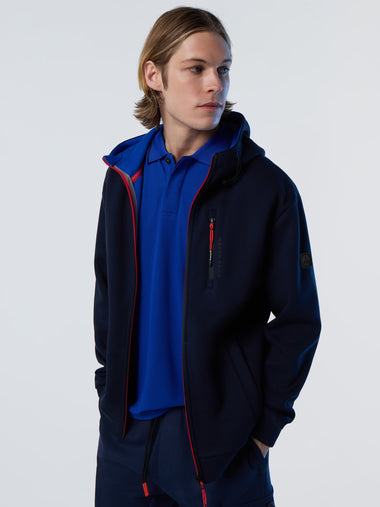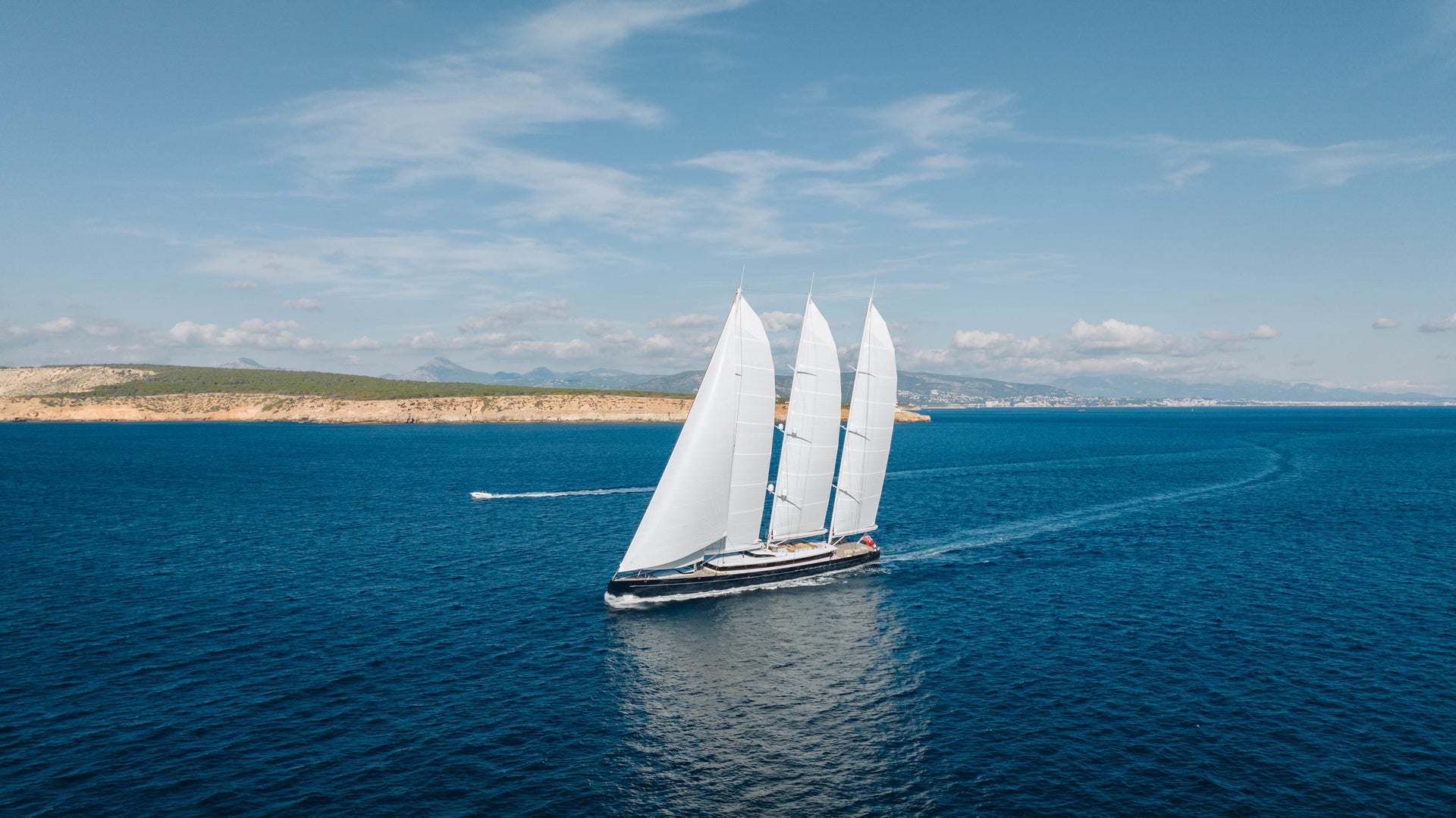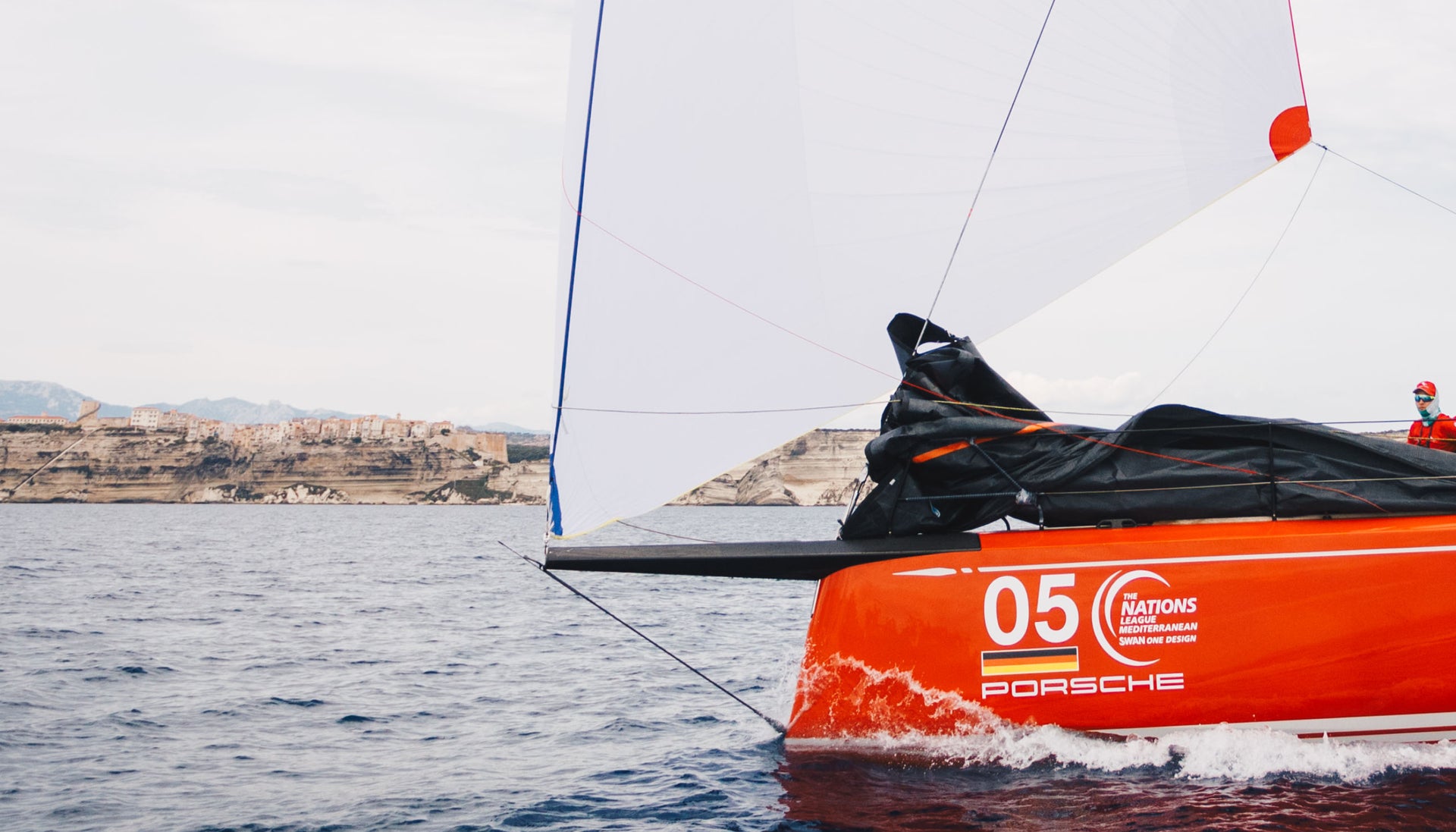A WINNING COMBINATION FOR DECADES
What North Sails Learns and Brings Back is a Benefit to the Entire Sport

Since 1988, North Sails has been the choice of every winning challenger and defender—and we also helped power the winners in 1980, 1983, and 1987. Though the America’s Cup may seem quite removed from the sailing most of us do, the lessons North designers bring back from every Cup cycle benefit the entire sport—not just the folks sailing the latest and greatest generation of boats.
The fastest boat consistently wins the America’s Cup, and we’ve consistently kept the secrets and built the sails that give teams the confidence boost of superior boat speed. Now that AC36 is in the history books, we’re taking a look back at some of the more memorable innovations our experts came up with over the past 40 years—advances that we now take for granted, which were originally forged during the battle for the Auld Mug.
1983: Team Australia’s “Warp-Speed”
The buzz around what would be the last America’s Cup summer in Newport was all about that winged keel, but this regatta also began a quieter revolution: warp-oriented sail cloth. Both the defender (Freedom) and challenger (Australia II) sported the North Sails logo, but onboard the clearly faster Australia II polyester panels in the luff had been sewn to a Kevlar leech. The tri-radial layout was designed and developed by Tom Schnackenberg of North Sails in New Zealand, and they were thought to be considerably lighter and less stretchy.

A New York Times article published a few weeks before Cup racing started refers to Kevlar and Mylar as “jet-age materials” that are now “the norm for such boats.” The article continues:
“Further change is in the wind, however. … As Mr. Marshall explained: ”Most of our sails are vertical panels, with Kevlar running along the warp, or long direction of the fabric. In the spider web cut, the direction of the Kevlar is changed at different stages throughout the sail. As stress follows a curve through the sail, so the strong Kevlar fibers follow a curve rather than a straight line.” The result is a web of panels that makes sails more efficient. Mr. Marshall said the spider cut will undoubtedly become a popular item in the racing market.” Read the full New York Times article.

1987: Dennis Conner wins back the America’s Cup
This is the Cup that still makes 12 Metre fans drool: big wind, big waves, and big personalities. Stars and Stripes won 4-0, with an afterguard that included the new North CEO, Tom Whidden.

1992: 3DL Coming out party
San Diego’s first America’s Cup saw the technologically advanced America3 win over Italy’s Il Moro. Both teams sported North Sails—though their development paths were quite different. America3’s innovative molded sails would be further developed and eventually brought to market as 3DL, while Il Moro tested distinctively gray to black carbon sails.

1995: Team New Zealand’s First Win and a big year for North Sails
The last Cup of the 20th century was also the last Cup (to date) held in Southern California—and the first-ever victory for Team New Zealand with KZ1. Team Dennis Conner, PACT 95, and TNZ raced with early versions of 3DL, and although the exact parameters varied, all were molded in carbon fiber and then filmed in mylar.
Build details have come a long way since then, but a story in Design News shows that Cup secrets were held just as tightly by the North Sails team as they are today. “Many of the designers on these teams are North personnel, and they’re sworn to secrecy. ‘After the Cup, the North people get together and share their secrets and it benefits North immensely,’ says
Here’s how TNZ’s sail designer Burns Fallow remembers 1995: “Most other teams were torn between keeping on developing panel sails and investing in 3DL. We were one of only two teams that said from day one: ‘We’re going to put all our effort into this new technology.’”
In 2020, Sail World celebrated the 25th anniversary of Team New Zealand’s first Cup victory. A quote from North’s CEO, Tom Whidden, notes another constant: what gives TNZ its edge is not any one thing but the overall package. “Their edge comes from a whole bunch of things—from the hull, to how it relates to the aerodynamics of the rig and sails. The crew has done a good job too. We knew that we were in trouble coming into this series and hoped that the switch from our own yacht, Stars & Stripes, to Young America would put us in the ball game. The margins would have been scary in the other boat.”

2000: Carbon Fiber and the Kiwis still Dominate
The first America’s Cup sailed without an American team was won by sails built in the USA; in fact, all but one of the twelve teams used what Gary Jobson (ESPN) called the “North Sails 3DL process.” Team New Zealand successfully defended against Team Prada, winning all five races.
Burns Fallow claims there wasn’t much difference in the sails from the previous Cup: “We used more carbon fibre than we’d used in 1995. You would call that more of an evolutionary campaign than a revolutionary campaign.”

2003: Alinghi’s first win
There were lots of differences between the winners (Alinghi) and losers (Team New Zealand) in the first America’s Cup of the 21st century (including TNZ’s famous hula), but both boasted the same blue sail logos. According to Tom Whidden’s America’s Cup Hall of Fame bio, “since Whidden became president, the art and science of sail making has been advanced so completely that every America’s Cup contender of 2003 used North Sails.”

2007: 3DL Corners the Cup Market
What would be the last America’s Cup sailed in IACC yachts took place in Valencia, the choice of successful defender Alinghi. Halfway through the finals against Team New Zealand, New York Times sports writer Christopher Clarey identified the dominance of North Sails and 3DL: “Of the 12 teams who competed in Valencia, 11 were supplied by North Sails, the American company that has all but cornered the Cup market on the strength of its patented 3DL technology… The only syndicate not affiliated with North Sails was China Team, which finished last in the challenger series.
“The sails are the engines in this fuel-free sport. Designing them, preparing them and, ultimately, choosing them are decisive factors in who will win the Auld Mug and also in what recreational sailors will be hoisting in the years and Wednesday-night races ahead.”
“To a novice, the yarn patterns look nearly the same on each sail, but to an insider like Mickey Ickert
Clarey also quips: “Although in the early days of 3DL, it was not uncommon to find an insect laminated among the Kevlar and carbon, the bugs have since been ironed out.”

2010: Deed of Gift Match Develops 3Di
A trimaran beats a catamaran. A hard wing beats a soft mainsail. There was plenty of controversy leading up to this oddest of matchups off Valencia, which BMW Oracle USA won 2-0. It also sparked one of North’s most important decisions ever: to invest fully in turning an idea into 3Di technology.

2013: First to Foil
Even though AC#34 allowed teams to design their own sail inventory, every team chose North Sails for San Francisco’s America’s Cup. Although it’s remembered as the first foiling Cup, Burns Fallow (ETNZ) reminds us that foiling wasn’t actually part of the original protocol. “For designers, it all happened in 2011. Oracle Team USA thought they’d written the rule so that you could not foil, but we found a way.”
The unprecedented speed (and the tragic crashes it brought) of the foiling AC72s attracted the mainstream media to the Cup. Town and Country Magazine even sent a reporter out to cover the boats that could “outrun the wind”—and he had a closeup view of the new sail technology when another 72 capsized onto his ride. “The boat’s rigid seven-story-tall wing sail flares overhead. Calling it a sail feels wrong, for it’s not made of cloth. Imagine the wing of a 737 stood on end, with articulating carbon panels attached to a black mast and sheathed in Mylar, Clysar, and other villainous-sounding materials…. every team in the 2013 Cup is using North Sails, and every winner since 1980 has used them.” (North designed the soft sails, not the wings.)

2017: How to Skin a One Design Cat
AC45s, the exciting catamarans used for the America’s Cup in Bermuda, had 3Di one-design soft sails to reduce campaign costs. That created a different challenge than the usual America’s Cup design secrecy: how to make sure all the sails were identical, and durable enough, to be problem-free over a long contentious summer of racing (America’s Cup World Series, Louis Vuitton Challenger Series, and the America’s Cup finals). Fortunately, experience as the official supplier for the one-design Volvo Ocean Race made North the obvious choice as exclusive supplier for one design AC45 sails.
Although he wasn’t involved directly with AC35, Burns Fallow predicted that computer aided design would be even more important as the teams headed into AC36, because sails have “got to be really strong. That’s probably the biggest misconception people have about sail design — they just think of a sail as being like a bed sheet. They don’t appreciate how much force is being generated by sails and how much force these boats need to get to the speeds they do.” Read his full interview in Boats International.

2021: AC75s—one hull, two mains, and 50+ knots
Long before anyone knew the winner of the 36th America’s Cup, North Sails could safely be declared the winning sailmaker. Emirates Team New Zealand, Luna Rossa Prada Pirelli, and Team INEOS UK all chose North, partly because they trusted the team to keep proprietary information secret. Even Per Andersson, who runs the 3Di facility in Minden, Nevada, where both teams’ inventories were built, says he’d have to ask for very special permission to access any of the design files. “We know how important security is. The files are password-protected, and only two people here are granted access.” Read more: Keeping Secrets at the 36th America’s Cup
North designers were involved right from the get-go, because as soon as Emirates Team New Zealand won back the America’s Cup in 2017 they’d asked for North’s help to design a revolutionary soft-wing mainsail. North Design Suite is the most technically advanced sail design program in the world, but even its software had to be updated to enable the twin-skin mainsail design the team came up with.
Lead designer Burns Fallow worked closely with Michael Richelson, who remembers all the hard work that preceded the 2018 protocol: “We did not have a lot of time to figure out if this big idea was to be feasible or not, and there were some big questions to be answered… how much are the loads shared between the windward and leeward sail skin? How will the batten/mast interaction work, and how much aerodynamic benefit will there be from this? It would be far too dangerous to guess those answers.” (Read the full interview.) All but one of the four teams chose North to build their cutting edge designs.

What’s Next for the America’s Cup?
Before America’s Cup sail design can further evolve, a few decisions need to be made by the defender Emirates Team New Zealand and their newly named Challenger of Record, INEOS TEAM UK. With rumors flying around the

























